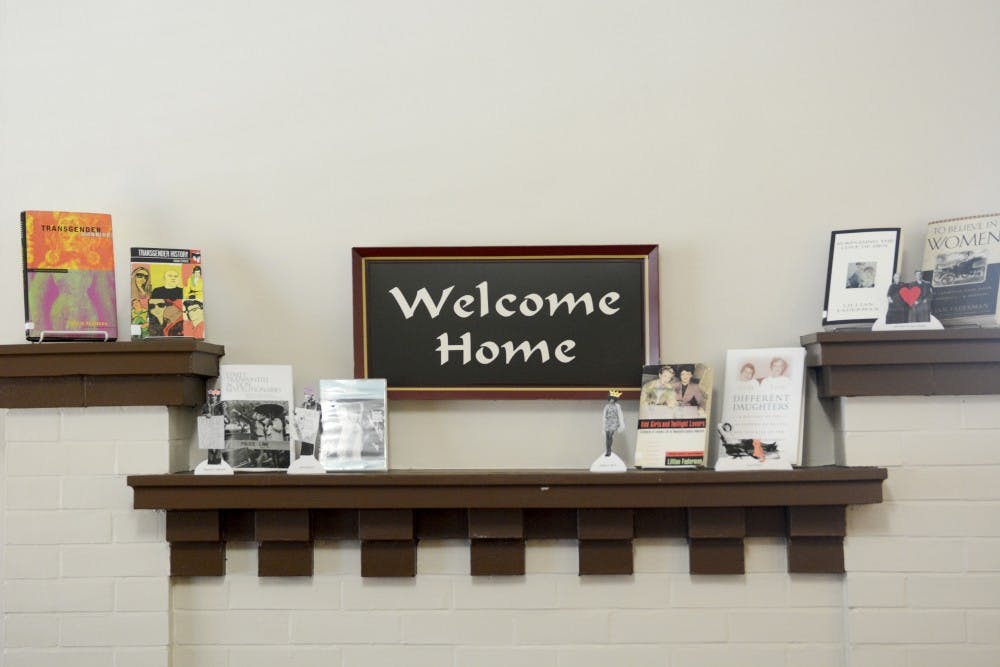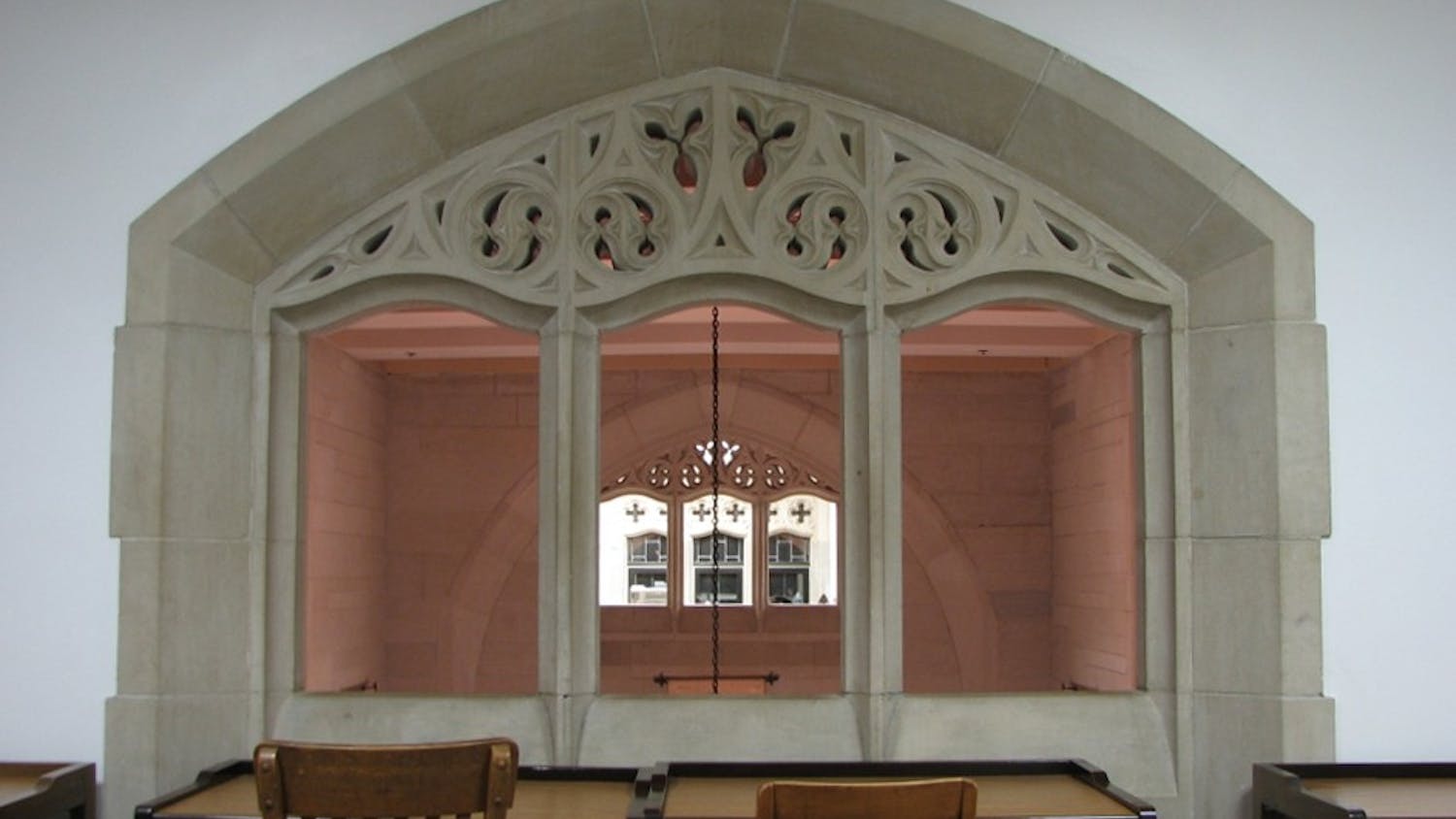Embracing Latino diversity
Potted plants and white shutters greet students as they enter through the front door of La Casa Latino Cultural Center. Inside, students chatter while working on homework. One student taps a pencil on his chin as he leans back in a dark wooden chair, hovering just in front of the pale blue wall. Downstairs, a plaid blanket lies on a couch, ready for students. La Casa Director Lillian Casillas says students often choose to nap there.
“It’s no coincidence that La Casa means ‘the house’ or that it’s in an actual house rather than a normal building,” Lillian tells Inside. “We really want this to be home.”
The word Latino refers to people from Latin America, the Caribbean, South America and Central America.
As a result of this wide geographic spread, it can be difficult to cater the space to the needs and concerns of everyone within the diverse Latino community.
“It can be easy to generalize, but this community is so diverse that you really just need to listen to what the individuals want.”
By listening, she said La Casa can be a space for the community to build and evolve themselves, which makes it welcoming to everyone.
“La Casa is what you want it to be.”
Empowering the undocumented
Another challenge for building a safe space for the Latino community is to make sure undocumented students feel secure — a task that is only made more difficult by the current political climate.
“These days especially, undocumented students feel like they can’t trust anyone,” Lillian says. “They feel there’s no where they can go, and it can be so isolating.”
Her response is to recognize the struggles of undocumented students when talking to students at La Casa. By pointing out the elephant in the room without pressuring them to “out” themselves, undocumented students see that at least someone is thinking about them — a venture that goes far in quelling fears.
La Casa also helps undocumented students connect with employers and assists them in making realistic education plans. Because most undocumented students don’t qualify for financial aid or in-state tuition, money becomes another concern many students need help with.
“It’s like a relay race,” says Lillian. “Someone at their high school pushed for them so that they ended up here. Now, we pick up the reins.”
As they face politicians calling for stricter immigration policy and news about undocumented immigrants being detained, many undocumented students feel powerless.
At La Casa, Lillian places power back in the hands of undocumented students.
“We give them the power of choice. We give them options. We give them the power to control their own futures.”
Standing at the intersections
When she heard the LGBTQ+ Center had just moved from a single room in the back of the Office of Student Ethics to the house it’s in now, Lillian dragged a group of students at La Casa to welcome them to the neighborhood.
Doug Bauder, director of the LGBTQ+ Center, said Lillian was like a shepherd guiding a flock of sheep who were digging their hooves into the ground.
“Some of them were these big, macho guys,” he tells Inside, while flexing his biceps jokingly. “I don’t think they really wanted to come to the ‘gay house.’”
But they did, and Doug says he got the impression they learned a lesson on acceptance.
The interaction kicked off two decades of friendship between him and Lillian. In his office, he even has a photo of him beside her.
Their friendship has carried over to a cooperation between the centers — a cooperation that is apparent in their new Latinx initiative, which is dedicated to serving the intersections between the centers.
Doug says he needs to be aware of the racial and ethnic diversity within his center while Lillian says she needs to be aware that the Latino community includes people of all kinds of sexualities and places on the gender spectrum.
Creating a safe space for their communities therefore means working together, he says.
“For those at the intersection between both communities, they have a unique set of concerns and struggles. We need to recognize that and make them feel secure in both centers.”
Lillian says having the resources and encouragement of both communities means students at the intersections can build a wider support network.
“They don’t just have one community behind them,” she says. “They have two. They have supporters across campus, across centers, across divides.”
The toolbox for building a safe space
Mounted on the wall at the LGBTQ+ Center is a wooden “Welcome Home” sign.
Doug knows creating a safe home for the LGBTQ+ community involves allies creating a safe space within themselves so that LGBTQ+ individuals feel comfortable approaching them.
He says humor, listening skills, curiosity, a desire to understand and an ability to ask questions respectfully all serve as tools in building a safe space across all genders, races and sexualities.
“Another factor is showing students they have something to offer. It means listening and learning from them instead of assuming you know all the answers.”
Lillian also sees how vital listening can be. First, she says she must get to know La Casa members on a human level. Next, she needs to listen for their needs and especially for shifts in behavior.
It was through paying attention to shifts in behavior that she was able to get a girl contemplating suicide the assistance she needed. She tells Inside that it’s not uncommon for members of minorities to face mental obstacles, so it’s especially important for her to listen.
Doug says using language that is inclusive is another way to build a safe space. These efforts may involve being careful to use appropriate gender pronouns and understanding different types of sexuality.
“A lot of people like to have a label that can describe their own experience,” he says. “When we aren’t using words that include those labels, it can reflect that we aren’t a space catered to them.”
But part of building a safe space falls on the individual. He says students at both centers should look for safe spaces within themselves by tapping into their own hearts.
“Realize the strength in you. Know you have a brain, a good heart, an inquisitive mind. You have everything you need. You are safe in your own mind, within yourself.”
Overcoming threats
Despite best efforts to create a safe space, Doug says he sees constant threats to that security, especially during the Trump Administration.
As a result, people from the LGBTQ+ and Latino communities often don’t feel heard.
“You can’t be afraid to talk about it with students. And you certainly can’t be afraid to talk it through with people who approach with ignorance,” he says. “You need to be respectful and calm but express your own viewpoint.”
Lillian says even within the center, she wants to challenge students to be understanding of all minorities. While La Casa is a safe place, she said she doesn’t want it to be a place for people to hide or continue their own prejudices.
But even when one of her students says something with underlying prejudice, she said she tries to understand their perspective and push them to challenge their own viewpoints.
“I don’t want to be combative,” she says. “It accomplishes nothing.”
But of course when people choose to be argumentative instead of understanding one another, walls go up.
“But we don’t need any more walls. We need bridges!”
Doug on the other hand, isn’t too worried about how safe students feel within the center’s walls. He says he has that covered. What he is worried about is what students face when they walk out the door.
“I just want them to feel loved, accepted and worthwhile. I want them to have the confidence to take on the world even during these difficult times.”
*********
ONLINE EXCLUSIVE
The Islamic Center of Bloomington
Protruding from the brown and white bricks of the Islamic Center of Bloomington is a metallic crescent moon—a symbol for Islam dating back to the Muslim Ottoman empire’s flag.
Inside the mosque or masjid, a child plays with a collection of toys scattered on the floor. A woman places white ceramic plates into cupboards in the kitchen.
And in the prayer hall, two men sit on the carpeted floor—one typing on his laptop, the other reading commentary on the Quran.
“It is a place for us to gather,” masjid member Yasin Ramazan said. “It is like a home.”
But it’s not sacred in itself.
Ramazan said the masjid serves solely as a gathering place for prayer and community events. The building itself is not sacred, but it is its use that gives it religious significance.
While the masjid is specifically set aside for prayer, Muslims can pray anywhere. As a result, anywhere can become sacred in a sense, Ramazan said.
“The whole Earth is your masjid,” he said.
The wooden door to the prayer hall swings opens and two heads glance up. Behind them, the off-white walls are bare, except for a board of prayer times.
Ramazan said the aesthetic simplicity is meant to keep the focus on God. While there are banners with scripture quote outside that help connect to God, he said keeping beautiful things in the prayer hall can elevate objects above God.
Mosques of the past were more concerned with aesthetics as a symbol of power for empires, Ramazan said.
“But now it’s not about power,” he said. “It’s about God.”
Against the walls are wooden bookcases filled with copies of the Quran, collections of sayings from the prophet Mohammed and commentaries on religious text.
While the other two are scholastic works, Ramazan said the Quran is sacred.
“That is the word of God,” he said. “That is our beliefs, how we live our lives.”
Between two of the shelves is a raised platform with a microphone. This is where the speaker addresses the congregation.
While many other religions raise certain platforms to lend religious significance, Ramazan said their platform is only meant to help people hear and see the speaker. He said this aligns with the masjid’s emphasis on function over form.
“It’s all very practical,” Ramazan said.
Ramazan said the prayer hall must also point toward the Kaaba—the building in the center of the mosque, Al-Masjid al-Haram, in Mecca. This spot is considered the most sacred site in Islam.
Muslims around the world face the Kaaba when they pray, creating a sense of community and togetherness, Ramazan said. He even has a compass-like app on his phone to help him find the direction of Kaaba when he prays elsewhere.
“The direction is selected by God,” he said. “And the focus is on God.”
Just outside of the prayer hall is a bathroom with stalls and faucets in front of seats. Here, members slip into black flip-flops from the rack by the door and perform ablutions.
Ablutions involve the washing of parts of the body before prayer.
When water is unavailable, Muslims often use soil instead.
So the procedure is not about becoming physically clean, Ramazan said. Instead, it is meant to become clean or pure in a symbolic way.
“It also separates prayer from daily life,” Ramazan said. “By purifying ourselves, we set this time of our day apart from the rest. We give it the importance it demands.”
He said the use of prayer rugs and removal of shoes before entering the masjid also centers around this idea of symbol cleanliness.
“We purify ourselves in preparation for prayer,” he said. “It’s in preparation for connecting with God.”
St. Paul’s
Sunlight filters through stained glass, and a red candle flickers by the altar.
“Christ is present,” Father Patrick Hyde said.
The candle, known as the sanctuary lamp, is lit to indicate the presence of the Eucharist, and therefore Christ, in the tabernacle—an ornate, gold-colored box.
The Eucharist represents the body of Christ. And when Catholics consume the white, circular wafer, God feeds them both spiritually and physically.
"It’s a way for God to become one with us,” Hyde said.
At the front of the room is the sanctuary, which is elevated to set it apart from the rest of room. This is the most sacred spot in the church, Hyde said.
He said it is also where Catholics experience the height of their relationships with God.
Hyde said each component of the sanctuary contributes to its sacred quality. The first part is the ambo or pulpit, where the scriptures are read. The next is the presider’s chair, where the priest sits. And then is the lectern—the podium where the cantor sings.
Song is especially important in creating a sacred space because it creates a community, Hyde said.
“We also don’t sing a lot in our everyday life,” he said. “So singing really elevates what’s being said to something greater than everyday conversation.”
The next is the crucifix, where Jesus hangs from the cross above the congregation. As parishioners sit in their pews, they face Jesus on the cross.
Below the crucifix is the altar—the focal point of the sanctuary. Hyde said everything in the room leads us to the altar.
“Through the prayers of the priest, who is acting as Christ himself, Jesus’s body and blood is made present there,” Hyde said. “That’s why it’s such a sacred place.”
The high ceilings and open design is also meant to shift attention up to God, Hyde said.
And as incense burns, the scented smoke floats up into the air, mingling with the sound of voices and instruments. Then, the priest says “lift up our heart,” and the people’s hearts go up to join them, Hyde said.
“Everything in the sanctuary is to point up toward something greater, to point toward God, to point to something deeper,” Hyde said.
Those beautiful details and the grandness of the space sets it apart from ordinary rooms, Hyde said. As a result, the space becomes sacred.
“So when you step into church, you don’t leave the world, but you almost step into somewhere parallel, into a new mindset,” he said.
In the back of the church is a stained glass window mixed with reds, oranges, yellows, greens, blues and browns. In the patches of glass are abstract symbols representing the eight beatitudes or the promises God made to his people.
To the left are stained glass representations of the stations of the cross, which outline the 14 steps or stations of Jesus’ journey from condemnation to burial in the tomb.
Hyde said these aesthetic components have symbolic and educational importance, but can be expensive. As a result, congregations must strike a balance between form and function.
But even when form is brought into consideration, the congregation must consider its purpose.
“We have these spaces not to glorify ourselves, but to glorify God,” Hyde said. “We have to ask ourselves: are we investing in making this space beautiful because we want to honor God or because we want to show it off for ourselves?”
For Hyde, his favorite time to visit this sacred space is at night after all of the 50 to 60 candles on the shrine on the side have been lit by people offering prayers during the day. During this time, the only light comes from the candles—a soft, golden glow.
“It’s beautiful,” Hyde said. “It’s a place of prayer. It’s a place of silence. It’s a place of love.”






